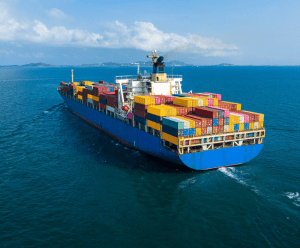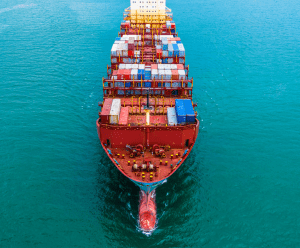
Air freight solutions alleviate Suez diversions

While conflict on the shipping lane leading to the Suez Canal has led to a major challenge ahead for ocean freight, air cargo demand stands to benefit from the major disruption to ocean supply chains.
As the turn of the year approached, international shipping was under attack from the part of Yemen controlled by the Houthi rebels on the Bab al-Mandeb Strait, a narrow strait between Africa and the Arabian Peninsula which forms the southern entrance to the Red Sea and the Suez Canal.
As of the third week of December, virtually all container vessels that would normally transit the Suez Canal were rerouted around the Cape of Good Hope. In fact, some container ships that had already transited southbound through the Suez but had yet to reach the Bab-el-Mandeb Strait were turning back, paying another toll to exit to the Mediterranean.
This is prompting exporters of everything from toys and apparel to perishables and car parts, to turn to air cargo options. This modal shift could last until shipping routes via the Suez Canal for container ships are deemed safe again.
Niki Frank, CEO, DHL Global Forwarding Asia Pacific, “We expected increasing volumes outbound from Asia to all regions during this period leading up to Chinese New Year, as businesses try to get inventory out of factories in China before they close for the holidays. Given the influx of capacity we were not anticipating a challenge for space, but with the Red Sea impact, the demand for air freight might look a little different.”
The Ever Given effect
On 23 March 2021, the container ship Ever Given rammed its bow into the eastern bank of the Suez Canal, causing the waterway to remain blocked until 29 March. The closure held up trade valued at over US$10 Billion (€9.13 Billion) a day and the domino impact on supply chains was felt for months afterward.
Alex Lennane, Publisher of The Loadstar, told the latest episode of The Loadstar podcast that one source expected the Suez Canal disruption of late 2023 to be the equivalent of “Ever Given times 100”.
To put events into perspective, the Suez Canal shipping route is used by around 25-30 percent of global container volumes, according to Fitch Ratings.
As a result, Lennane noted that “air freight would get very busy” as shippers look to restock after Christmas and before Chinese New Year factory closures.
She further noted that with emergency items that are now stuck on ships, customers will have to order more stock and have them delivered via air freight.
Although naval convoys are being set up to protect shipping, container lines are unlikely to risk ships and seafarers until their safety is guaranteed, meaning that the Suez Canal route for container vessels could be unavailable indefinitely, vastly increasing delivery times and freight rates.
In fact, according to an analysis by Drewry, freight rates from Shanghai to Rotterdam increased by 16 percent week-on-week, while rates from Shanghai to Genoa are up by 15 percent in the week to December 21.
Frank noted that DHL Global Forwarding is coordinating any modal shifts from shipping to air or other alternatives with customers as required. “The attacks on the Suez Canal trade lane impact a sizeable percentage of the global container trade which, of course, will lead to ocean supply chain bottlenecks,” he said. “We are already fielding inquiries from customers about diversifying to multimodal options. In fact, some of them are diverting urgent cargos to air freight.”
Diversion implications
For the Africa routing, the increase in sailing times is substantial, especially for services to the Mediterranean. According to Sea-Intelligence, using a standard speed of 17 knots during the deviation around the Cape indicates an increase in transit time of roughly nine days on Far East-North Europe, 14 days to the Mediterranean, and five days to the North American East Coast.
However, additional vessels will need to be injected into services on these trades for a full roundtrip to maintain a weekly departure. Lynerlytica said diversions away from the Suez Canal could tie up 30 percent of the box ship fleet.
The Suez crisis comes as the Panama Canal is also struggling with a severe drought and has slashed the number of ship-passages it allows. In addition, there is a race to get goods in transit before Chinese New Year factory closures planned for 10 to 17 February, which can disrupt supplies for a month or longer.
Moreover, Lars Jensen told The Loadstar that container shipping could very quickly find empty containers are in the wrong places, further increasing demand for modal alternatives.
“We might have enough containers, but they might not be in the right geographical locations,” he said. “Vessels bringing in empty containers needed for peak season in China will end up stuck in other places."
Driving demand in the long-term
Apart from the short-term increase in demand for air freight from the Suez disruption, some analysts believe there could be a long-term benefit for operators.
Pierre Van Der Stichele, Vice President of Global Cargo at Charter Broker Air Partner, told Air Cargo News that higher costs and increased transit times for container ships have “the potential of increasing demand for air freight” in the long term.
Even before the Suez Canal crisis worsened, WorldACD reported that worldwide air cargo demand had rebounded significantly above last year’s levels, driven by strong export volumes from China, with preliminary tonnages for November up by 5 percent, year-on-year, and up 1 percent from the previous month. This took combined tonnages for the peak period of October and November to around 3 percent higher than last year.
On 21 December, the analyst said global average air cargo rates “now stand 50 percent above their pre-Covid levels compared to this time four years ago, following the significant rebound in demand and pricing observed in the last few months”.
The December edition of DHL’s Air Freight State of The Industry reported a surge in tonnage in Asia, driven by booming e-commerce, new product introductions, and increased retailer use of air shipping. Technology and Consumer sectors are also playing a significant role in driving increased demand, resulting in industry backlogs in China and Hong Kong.
Looking forward to new year, Nomura expects a “tech-led tailwind” to augment export growth in H1 2024. “Overall, we are fairly optimistic that export growth in the year ahead should be better than in 2023, given the starting point,” concluded the analyst.
ALSO WORTH READING












 English
English